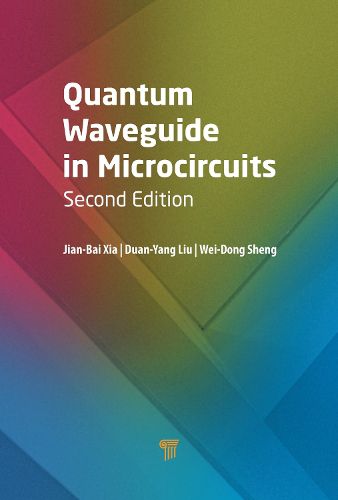Readings Newsletter
Become a Readings Member to make your shopping experience even easier.
Sign in or sign up for free!
You’re not far away from qualifying for FREE standard shipping within Australia
You’ve qualified for FREE standard shipping within Australia
The cart is loading…






Integrated circuits were developed following Moore's law. Moore's law predicts that the degree of microprocessor integration would double every 18 months in DRAM. However, as the size of circuit elements approaches its physical limit, the optical method used in manufacturing 16 nm-node chips is also approaching a limit. Although the scaling of microelectronic circuit elements still follows Moore's law, the unit density of power consumption will become unacceptable. Therefore, on the one hand, people continuously develop the microelectronic technology, and on the other, they consider the developing road after Moore's law is broken, i.e., more Moore's law or more-than Moore's law.
Physically, when the scale of a circuit element decreases to 10 nm or even less, the quantum effect will appear and play a more and more important role. The electron transport becomes non-classical and non-linear, and even the electron motion likes the waveguide motion. This book introduces some theories and experiments of quantum transport and consists of two parts: (1) Non-Classical and Non-Linear Transport and (2) Quantum Waveguide Theory. It provides some foundations of semiconductor micro- and nanoelectronics for the after-Moore age. The two new chapters in this edition present investigations on (1) mesoscopic transport and (2) Rashba electron's spin transport in a straight waveguide with a stub that has a smooth boundary.
$9.00 standard shipping within Australia
FREE standard shipping within Australia for orders over $100.00
Express & International shipping calculated at checkout
Stock availability can be subject to change without notice. We recommend calling the shop or contacting our online team to check availability of low stock items. Please see our Shopping Online page for more details.
Integrated circuits were developed following Moore's law. Moore's law predicts that the degree of microprocessor integration would double every 18 months in DRAM. However, as the size of circuit elements approaches its physical limit, the optical method used in manufacturing 16 nm-node chips is also approaching a limit. Although the scaling of microelectronic circuit elements still follows Moore's law, the unit density of power consumption will become unacceptable. Therefore, on the one hand, people continuously develop the microelectronic technology, and on the other, they consider the developing road after Moore's law is broken, i.e., more Moore's law or more-than Moore's law.
Physically, when the scale of a circuit element decreases to 10 nm or even less, the quantum effect will appear and play a more and more important role. The electron transport becomes non-classical and non-linear, and even the electron motion likes the waveguide motion. This book introduces some theories and experiments of quantum transport and consists of two parts: (1) Non-Classical and Non-Linear Transport and (2) Quantum Waveguide Theory. It provides some foundations of semiconductor micro- and nanoelectronics for the after-Moore age. The two new chapters in this edition present investigations on (1) mesoscopic transport and (2) Rashba electron's spin transport in a straight waveguide with a stub that has a smooth boundary.